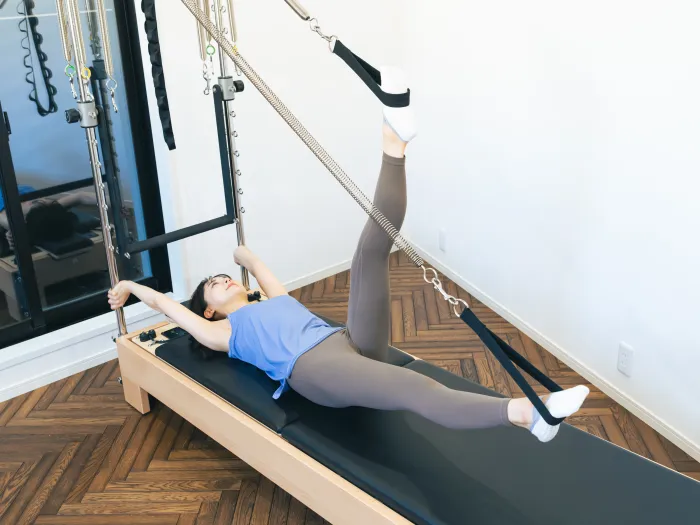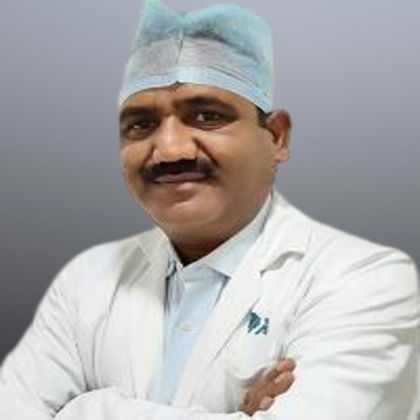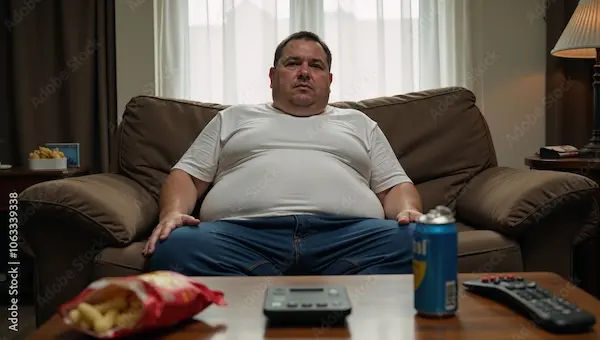Guide to Orthopaedics: Keyhole Surgery for Knock Knee Correction
Learn how keyhole orthopaedic surgery can correct knock knees (genu valgum) in children and adults. Discover candidacy, planning, minimally invasive techniques, rehabilitation, costs, and expected outcomes. An expert, easy-to-read guide to help you make informed decisions about knee alignment correction.

Written by Dr. Mohammed Kamran
Reviewed by Dr. D Bhanu Prakash MBBS, AFIH, Advanced certificate in critical care medicine, Fellowship in critical care medicine
Last updated on 28th Oct, 2025

Introduction
Knock knees, known medically as genu valgum, can affect posture, walking mechanics, and overall knee health. While mild valgus is common in childhood, persistent or severe misalignment in teens and adults can lead to knee pain, cartilage wear, and reduced function. Advancements in orthopaedic care now allow precise correction through minimally invasive or “keyhole” techniques. These surgeries straighten the legs, rebalance weight across the knee, and help protect the joint for the future. Whether for pain relief, improved mobility, or cosmetic confidence, understanding your options is the first step. This guide explains candidacy, planning, surgical techniques, recovery, and long-term outcomes to help you make informed decisions about knock-knee correction.
Who Is a Candidate for Keyhole Knock Knee Correction?
Not all valgus knees need correction — evaluation focuses on symptoms, alignment severity, and growth status.
Clinical Indicators
• Persistent valgus beyond age 8 in children, especially when painful
• Adults with lateral knee pain, early arthritis, or meniscus strain due to valgus
• Functional or cosmetic concerns affecting mobility or work
• Failed non-surgical care, such as weight management, physiotherapy, or bracing
Radiographic Criteria
• Full-length standing alignment X-rays measure hip–knee–ankle angles and mechanical axis deviation
• CORA helps determine if the correction is best at the femur or the tibia
• CT may be used if rotational deformity or kneecap maltracking is suspected
Consult a Top Surgeon for Personalised Advice
Timing and Growth Considerations
• Children with growth remaining: guided growth allows gradual correction
• Adolescents near maturity: late guided growth or osteotomy depending on growth potential
• Adults: osteotomy is the preferred method to shift load away from the worn compartment
Clinical Insight
Most adult valgus originates from the distal femur — correcting the right bone improves outcomes.
Preoperative Evaluation and Planning
Accurate digital planning and bone health optimisation greatly improve surgical outcomes.
Imaging and Digital Planning
• Long-leg alignment X-rays with kneecaps forward
• Lateral knee X-ray to assess slope and joint line
• MRI if cartilage or meniscus injury is suspected
• Digital planning aims for neutral or near-neutral alignment based on joint wear patterns
Laboratory Tests and Bone Health
• Vitamin D, calcium, and metabolic markers were assessed and corrected if needed
• Better bone quality → faster healing
Anaesthesia and Perioperative Care
• Commonly, regional anaesthesia plus light general anaesthesia
• Enhanced recovery pathways reduce pain, nausea, and hospital stay
Planning Insights
• 3D templating and patient-specific guides increase accuracy
• Biplanar osteotomy allows for stable healing surfaces
• Arthroscopy can simultaneously treat meniscal or cartilage concerns
Surgical Techniques Explained
Minimally invasive options are tailored to age, deformity location, and cartilage health.
Guided Growth (Hemiepiphysiodesis)
• Small incisions to place a tension-band plate on the growth plate
• Outpatient or short stay, minimal pain
• Alignment slowly improves over 6–18 months
• Plate removed once neutral is reached
Distal Femoral Osteotomy (DFO)
• Most common in adults with valgus deformity
• Keyhole incisions with X-ray guidance and plate fixation
• Opening wedge allows fine-tuned correction; may use bone graft
• Protecting nerves and preserving joint line orientation is critical
High Tibial Osteotomy (HTO)
• Mainly for bow-legged alignment, but sometimes used in valgus with tibial deformity
• Arthroscopy is often combined to manage internal joint damage
• Good long-term results in appropriately selected patients
Case Snapshot
A 16-year-old with painful valgus underwent guided growth after vitamin D correction. Alignment normalised in 10 months, and sports resumed without discomfort.
Benefits, Risks, and Evidence on Outcomes
The primary goal is pain relief, improved function, and protection of the knee joint.
Benefits
• Reduces overload on the lateral compartment and the kneecap
• Improved mobility, strength, and activity confidence
• Can delay or prevent knee replacement
• Smaller scars and quicker recovery with keyhole techniques
Risks and Complications
• Over-/under-correction
• Bone healing delay or non-union
• Blood clots, infection, hardware irritation
• Guided growth requires follow-up to prevent overcorrection
Evidence in Practice
Osteotomy and guided growth are well-established with high satisfaction rates when performed by experienced orthopaedic surgeons.
Insight: Joint-line orientation matters as much as degrees of correction — ask your surgeon about their alignment target.
Recovery and Rehabilitation: What to Expect
Rehabilitation is structured, progressive, and crucial for restoring function.
Hospital Stay and Pain Management
• 1–2 nights in hospital for osteotomy; guided growth is often a day surgery
• Multimodal pain strategies reduce reliance on opioids
Weight-Bearing and Milestones
• Osteotomy: partial weight-bearing initially (2–6 weeks) → full by 6–8 weeks
• Desk work 2–4 weeks; manual work 8–12 weeks
• Jogging 4–6 months; pivoting sports 6–9 months
Physiotherapy Essentials
• Early: swelling control, quadriceps activation
• Mid: gait correction, hip and core strengthening
• Late: balance, agility, sport-specific conditioning
Real-World Example
A 38-year-old teacher returned to work at 3 weeks after DFO, full weight-bearing at 7 weeks, and doubles tennis at 7 months.
Living With Corrected Alignment: Long-Term Outlook
Realignment preserves joint health, improving quality of life for years.
Durability
Neutral mechanical axis reduces cartilage wear and helps maintain long-term mobility.
Lifestyle Maintenance
• Maintain a healthy weight
• Keep hip and knee muscles strong
• Choose joint-friendly activities (cycling, swimming, walking)
Hardware and Follow-up
• Plates and screws can stay unless irritating
• Adolescents require follow-up to ensure correction remains optimal
Insight: Kneecap alignment often improves after correction — targeted physiotherapy enhances this benefit.
Non-Surgical Options and When They Help
Some children grow out of knock knees naturally; adults often need more than exercise alone.
Children
• Observation until age 7–8
• Treat vitamin D deficiency or metabolic issues
Adolescents and Adults
• Physiotherapy for patellar alignment and gait
• Weight optimisation, activity modification
• Bracing helps pain, but does not correct bony alignment
When Surgery Is Needed
Significant malalignment + persistent symptoms despite 6–12 weeks of therapy usually warrant surgical review.
Costs, Insurance, and Choosing the Right Surgeon
Value lies in appropriate planning, expertise, and high-quality rehabilitation support.
Costs and Coverage
• Vary by region, implants, and hospital type
• Insurance usually covers medically necessary osteotomy for pain and joint preservation
• Ask for itemised estimates, including physiotherapy
What to Ask Your Surgeon
• Annual number of similar procedures performed
• Reason for chosen technique and desired correction target
• Use of arthroscopy or patient-specific guides
• Complication rates and return-to-work timeline
Hospital Considerations
• Access to calibrated long-leg imaging
• Experienced physiotherapy teams
• Robust blood clot prevention protocols
Insight: Higher-volume centres generally provide more predictable results.
Special Situations and Nuances
Treatment is personalised — age, activity level, and joint health guide decision-making.
Adolescents Near Skeletal Maturity
• Timing vital to avoid under- or overcorrection
Athletes
• Earlier advanced rehab; combined procedures may optimise return to play
Obesity and Bone Metabolism
• Weight loss and bone health optimisation improve healing rates
Bilateral Surgery
• Staged vs single-session depends on health and home support
Patellar Tracking Problems
• Rotational issues may need correction to relieve anterior knee pain
Insight: Slight undercorrection may sometimes be preferable to balance kneecap mechanics and joint protection.
Conclusion
Knock knees are not merely cosmetic — they can accelerate cartilage wear and cause significant knee pain. Modern keyhole orthopaedic techniques, including guided growth in children and minimally invasive osteotomy in teens and adults, offer safe, precise correction.
With thoughtful alignment planning, experienced surgical care, and committed rehabilitation, most patients walk fully by two months and return to active sports within 4–9 months. If your knees angle inward and symptoms hold you back, seek timely orthopaedic evaluation to protect your joint health and maintain the activities you enjoy.Consult a Top Surgeon for Personalised Advice
Consult a Top Surgeon for Personalised Advice

Dr Karthik Maripeddi
Urologist
13 Years • MBBS MS FMAS MCh URO(OSM)
Hyderguda
Apollo Hospitals Hyderguda, Hyderguda

Dr. Kiran Kumar Kanar
General Surgeon
5 Years • MBBS, DNB (General Surgery). Consultant - General Surgery.
Rourkela
Apollo Hospitals, Rourkela, Rourkela

Dr. Sanjay Shah
General Surgeon
17 Years • MBBS ; M.S , DND , ( Gen Surgery) , F.N.B(Trauma Care)
Ahmedabad
Apollo Hospitals Gandhinagar, Ahmedabad

Dr. Milind Navnit Shah
General Surgeon
26 Years • MBBS MS
Nashik
Apollo Hospitals Nashik, Nashik

Dr. Shyam Sunder Pachisia
General Surgeon
24 Years • MBBS,MS ( General Surgery)
Noida
Apollo Hospitals Sector 26, Noida
Consult a Top Surgeon for Personalised Advice

Dr Karthik Maripeddi
Urologist
13 Years • MBBS MS FMAS MCh URO(OSM)
Hyderguda
Apollo Hospitals Hyderguda, Hyderguda

Dr. Kiran Kumar Kanar
General Surgeon
5 Years • MBBS, DNB (General Surgery). Consultant - General Surgery.
Rourkela
Apollo Hospitals, Rourkela, Rourkela

Dr. Sanjay Shah
General Surgeon
17 Years • MBBS ; M.S , DND , ( Gen Surgery) , F.N.B(Trauma Care)
Ahmedabad
Apollo Hospitals Gandhinagar, Ahmedabad

Dr. Milind Navnit Shah
General Surgeon
26 Years • MBBS MS
Nashik
Apollo Hospitals Nashik, Nashik

Dr. Shyam Sunder Pachisia
General Surgeon
24 Years • MBBS,MS ( General Surgery)
Noida
Apollo Hospitals Sector 26, Noida
Consult a Top Surgeon for Personalised Advice

Dr Karthik Maripeddi
Urologist
13 Years • MBBS MS FMAS MCh URO(OSM)
Hyderguda
Apollo Hospitals Hyderguda, Hyderguda

Dr. Kiran Kumar Kanar
General Surgeon
5 Years • MBBS, DNB (General Surgery). Consultant - General Surgery.
Rourkela
Apollo Hospitals, Rourkela, Rourkela

Dr. Sanjay Shah
General Surgeon
17 Years • MBBS ; M.S , DND , ( Gen Surgery) , F.N.B(Trauma Care)
Ahmedabad
Apollo Hospitals Gandhinagar, Ahmedabad

Dr. Milind Navnit Shah
General Surgeon
26 Years • MBBS MS
Nashik
Apollo Hospitals Nashik, Nashik

Dr. Shyam Sunder Pachisia
General Surgeon
24 Years • MBBS,MS ( General Surgery)
Noida
Apollo Hospitals Sector 26, Noida
More articles from General Medical Consultation
Frequently Asked Questions
1) Is keyhole surgery for knock knees permanent?
Yes. In adults, osteotomy creates a permanent new alignment once healed. In children, guided growth is permanent once plates are removed at the correct time.
2) How long until I walk normally after distal femoral osteotomy?
Most people fully weight-bear at 6–8 weeks and achieve normal gait by 8–12 weeks, depending on healing and physiotherapy.
3) Can exercises alone fix knock knees?
Exercises improve symptoms but cannot correct bone alignment if the deformity is established.
4) Will hardware need to be removed?
Not always. It is removed only if uncomfortable or in specific athletic demands.
5) How do surgeons decide between femoral and tibial correction?
Alignment X-rays identify where the deformity originates — adult valgus is typically femoral, so distal femoral osteotomy is commonly chosen.




